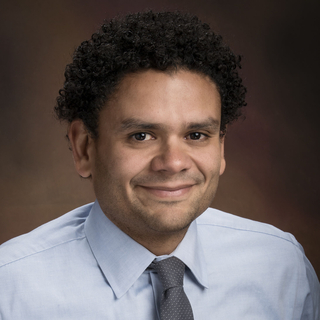
Researchers at Children’s Hospital of Philadelphia (CHOP) in collaboration with the Botswana Harvard Health Partnership identified measurable differences in brain tissue patterns between newborns exposed to HIV during pregnancy but not infected and those with no HIV exposure. While preliminary, the findings, recently reported in the journal Early Human Development, could potentially be associated with long-term neurodevelopmental outcomes.

More than one million infants globally are born each year to mothers who are HIV-positive and on antiretroviral therapy during pregnancy. Of those, many infants fall into a category known as HIV-exposed uninfected (HEU). Prior studies have shown that this group faces a higher risk of developmental delays compared with HIV-unexposed (HU) infants. Researchers sought to better understand whether subtle brain tissue differences detectable shortly after birth could be an early sign of that vulnerability.

CHOP’s research team, led by Laith Sultan, MD, MPH, a research scientist and principal investigator with the Center for Pediatric Contrast Ultrasound, Hansel Otero, MD, Vice Chair of Clinical Research in CHOP’s Department of Radiology and Elizabeth D. Lowenthal, MD, MSCE, FAAP, AAHIVS, an Attending Physician in CHOP’s Special Immunology Family Care Center, performed brain ultrasounds on 33 newborns – 20 HEU and 13 HU. Radiomic analysis examined microscopic texture variations, including tissue heterogeneity and uniformity, in two key brain regions: the basal ganglia, which regulates movement and learning, and the periventricular white matter, crucial for communication. The researchers then compared these imaging metrics between the two groups and found changes in these regions that may be linked to long-term neurodevelopmental outcomes.
While preliminary, the authors suggest that with further research, these findings show ultrasound radiomics could become a valuable biomarker in early-life brain health screening. However, the authors also noted that the findings do not prove brain injury or developmental harm but raise important questions about how in-utero HIV exposure, even without infection, might influence brain development.
“Early detection through affordable and accessible imaging methods like ultrasounds could allow for closer developmental monitoring and earlier interventions for at-risk children,” said Sultan, the first author, whose research focuses on advanced ultrasound imaging techniques. “Our study highlights the potential of radiomics as a low-cost, non-invasive tool to assess newborn brain health, especially in low-resource settings where HIV prevalence is high.”
The researchers plan to follow the participating infants to determine whether the detected textural differences are linked to later cognitive or motor outcomes, which could help shape early childhood healthcare strategies worldwide.
This research was supported by a grant from the Penn Center for AIDS Research (CFAR), an NIH-funded program (P30 AI 045008).
Sultan et al. “Brain ultrasound radiomics identify textural differences in basal ganglia and white matter between full term newborns HIV-exposed uninfected and HIV-unexposed in Botswana.” Early Human Development. Online August 6, 2025. DOI: 10.1016/j.earlhumdev.2025.106368.
Featured in this article
Experts
Specialties & Programs
Research

Researchers at Children’s Hospital of Philadelphia (CHOP) in collaboration with the Botswana Harvard Health Partnership identified measurable differences in brain tissue patterns between newborns exposed to HIV during pregnancy but not infected and those with no HIV exposure. While preliminary, the findings, recently reported in the journal Early Human Development, could potentially be associated with long-term neurodevelopmental outcomes.

More than one million infants globally are born each year to mothers who are HIV-positive and on antiretroviral therapy during pregnancy. Of those, many infants fall into a category known as HIV-exposed uninfected (HEU). Prior studies have shown that this group faces a higher risk of developmental delays compared with HIV-unexposed (HU) infants. Researchers sought to better understand whether subtle brain tissue differences detectable shortly after birth could be an early sign of that vulnerability.

CHOP’s research team, led by Laith Sultan, MD, MPH, a research scientist and principal investigator with the Center for Pediatric Contrast Ultrasound, Hansel Otero, MD, Vice Chair of Clinical Research in CHOP’s Department of Radiology and Elizabeth D. Lowenthal, MD, MSCE, FAAP, AAHIVS, an Attending Physician in CHOP’s Special Immunology Family Care Center, performed brain ultrasounds on 33 newborns – 20 HEU and 13 HU. Radiomic analysis examined microscopic texture variations, including tissue heterogeneity and uniformity, in two key brain regions: the basal ganglia, which regulates movement and learning, and the periventricular white matter, crucial for communication. The researchers then compared these imaging metrics between the two groups and found changes in these regions that may be linked to long-term neurodevelopmental outcomes.
While preliminary, the authors suggest that with further research, these findings show ultrasound radiomics could become a valuable biomarker in early-life brain health screening. However, the authors also noted that the findings do not prove brain injury or developmental harm but raise important questions about how in-utero HIV exposure, even without infection, might influence brain development.
“Early detection through affordable and accessible imaging methods like ultrasounds could allow for closer developmental monitoring and earlier interventions for at-risk children,” said Sultan, the first author, whose research focuses on advanced ultrasound imaging techniques. “Our study highlights the potential of radiomics as a low-cost, non-invasive tool to assess newborn brain health, especially in low-resource settings where HIV prevalence is high.”
The researchers plan to follow the participating infants to determine whether the detected textural differences are linked to later cognitive or motor outcomes, which could help shape early childhood healthcare strategies worldwide.
This research was supported by a grant from the Penn Center for AIDS Research (CFAR), an NIH-funded program (P30 AI 045008).
Sultan et al. “Brain ultrasound radiomics identify textural differences in basal ganglia and white matter between full term newborns HIV-exposed uninfected and HIV-unexposed in Botswana.” Early Human Development. Online August 6, 2025. DOI: 10.1016/j.earlhumdev.2025.106368.
Contact us
Kaitlyn Tivenan
Center for Pediatric Contrast Ultrasound